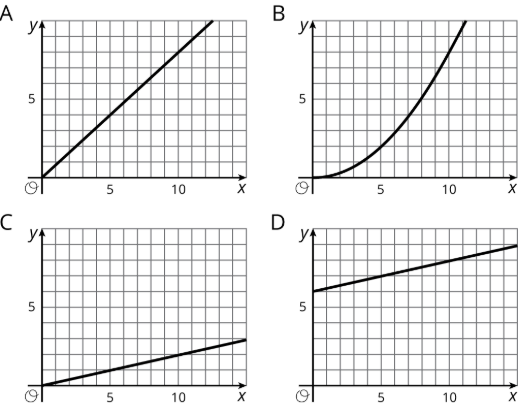

The y value represents the total cost, while the x value represents the number of apples that you buy.

Let’s graph our example of buying apples at $1.50 per pound. That means it will always go through the origin (0,0). If you are used to graphing lines with the formula y = mx + b, you'll see that the graph of a proportional relationship is simply a linear relationship without the b. The graph shows that a proportional relationship is always a straight line through the origin. While you can work with proportional relationships in algebraic form, you can also see it visually by graphing it on a coordinate plane. Let's replace the formula above with $1.50 as our constant of proportionality. We can see this in real-life applications: If the cost of an apple is $1.50 per pound, as the number of apples you buy (let’s use x) increases, the total cost you will have to pay (let’s use y) goes up at the same rate.

The k here is called the constant of proportionality, sometimes known as the unit rate. Y and x here are the quantities that are proportional to each other. We can state this proportional relationship with the formula, y = kx. Let's dive in! Proportional Relationships in Algebraic FormulasĪ proportional relationship means that two or more things are directly proportional, or that the quantities increase or decrease according to equivalent ratios. Not only will you see it in school, but you'll find it has many real-world applications. If you are in seventh grade and looking to review common core state standards ( CCSS), you will need to be familiar with this term. A proportional relationship, sometimes known as the constant of proportionality, relates two quantities according to a common ratio.


 0 kommentar(er)
0 kommentar(er)
